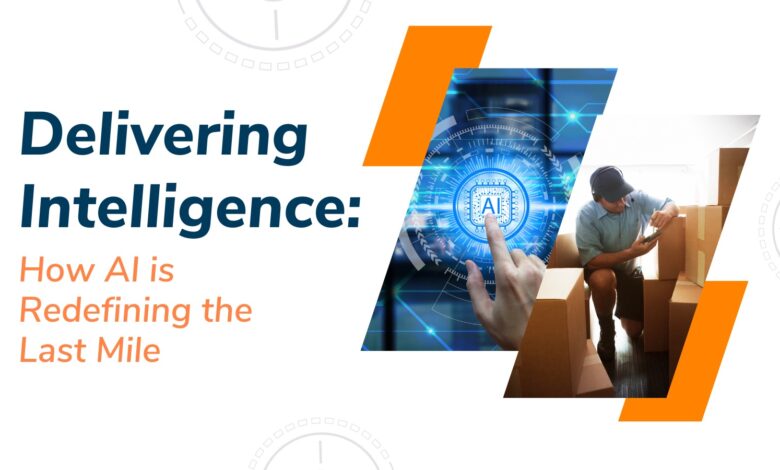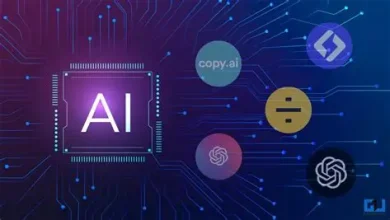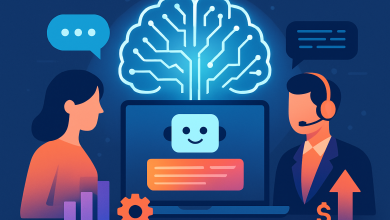
We’re living in an era where artificial intelligence (AI) has gone from hype to utility almost overnight. Just a few years ago, the conversation was about large language models (LLMs) and how they could summarize a report or draft a decent email. Today, we’re talking about agentic AI—systems that not only “think” using LLMs, but also act. These agents can take inputs, reason through options, access tools, and execute workflows. And that shift is fundamentally changing how companies operate, especially in the last mile.
In logistics, where everything moves fast and changes constantly, AI is quickly becoming more than a dashboard add-on. It’s becoming the operational backbone. But to really get the benefit, companies need an infrastructure that’s just as dynamic as the AI itself. The frameworks we build need to be nimble—able to swap out “brains” (models), reroute decision trees, and adapt toolsets instantly. That’s not optional. That’s what it takes to keep pace with AI’s rate of change.
Rethinking Business Functions: Beyond the Chatbot
AI in logistics is evolving from answering questions to making decisions. In the early days, AI was great at summarizing and helping us think faster. Now, it’s helping us act faster.
Customer support is a perfect example. Instead of just using AI to draft responses, teams are embedding AI into operational workflows. Need to reroute a delivery? AI can do that. Need to escalate a failed drop-off to the right stakeholder? It’s already done. That’s the power of combining reasoning (LLMs) with action (agentic frameworks).
This shift also forces us to rethink roles. AI is best when it removes repeatable tasks, giving people more time for judgment, strategy, and creative problem-solving. The ROI? It’s no longer just about cutting costs. It’s about reclaiming time, improving experience, and enabling people to operate at a higher level.
Knowledge Workers, Reimagined
From planners to marketers, AI is helping people step out of reactive mode. Route planners no longer have to rely on spreadsheets and intuition. AI can model thousands of delivery scenarios in real time—balancing fuel costs, weather, driver capacity, and more. Marketers are doing the same, using real-time delivery data to adjust personalized campaigns on the fly.
In this world, knowledge workers don’t just interpret data—they guide intelligent systems. They’re building, training, and refining AI as though it were part of the team. Because in many ways, it is.
Think of LLMs like new hires. They need onboarding. You have to define their job descriptions, permissions, workflows, and escalation paths. Building out agentic systems is a lot like team design: who gets access to what, when do they act independently, and when do they raise a flag for human review?
This kind of AI doesn’t just improve speed. It improves decision-making. And that’s a game-changer for any enterprise that deals in complexity and scale.
Building Smarter, More Resilient Supply Chains
Recent years have made it clear: supply chains need to be resilient by design. With disruptions now a constant, we can’t afford brittle systems that only work when everything’s perfect.
AI is increasingly the nervous system of resilient logistics. In the last mile, we’re seeing AI used to:
- Forecast demand surges before they happen
- Reroute deliveries in real time
Flag emerging bottlenecks before they become failures
- Recommend the most efficient use of vehicles and drivers
- Analyze costs dynamically—not just “per stop,” but per scenario
One real-world approach involves layering AI directly into the delivery stack. These systems analyze data across traffic, delivery time, fuel use, and even customer behavior. Instead of waiting for reports, teams can ask:
“How should I optimize deliveries on the east side this week, given my constraints?” The system doesn’t just answer—it learns, refines, and suggests again next week, smarter than before.
Even more critical: these tools surface hidden inefficiencies most businesses miss. Many operations run on outdated assumptions and rough averages. AI exposes what’s really happening, route by route.
Of course, building this capability takes effort—both in infrastructure and clean, contextualized data. But the cost of waiting? Even higher. In logistics, delays in adopting AI aren’t just missed opportunities—they’re competitive disadvantages.
Upskilling for the AI-Accelerated Workforce
As AI systems take on more of the routine, humans are moving into roles that demand judgment, context, and design thinking. And that transition needs intentional support.
Key focus areas for teams today:
- Data literacy: Understanding when and how to question AI recommendations
- Prompting and interfacing: Guiding AI to generate the most useful outcomes
- Systems thinking: Seeing the connections across roles, tools, and outcomes
One engineering team recently turned a ten-week build into a one-week sprint—not because AI replaced the engineers, but because it took care of the repetitive scaffolding. That freed up the humans to focus on architecture, testing edge cases, and collaborating on broader system implications.
Upskilling isn’t about making everyone an AI expert. It’s about building the confidence and clarity to lead in an AI-powered environment.
The Urgency to Build—Now
Here’s the truth: AI frameworks won’t be perfect right away. And that’s okay. What matters is building them now—with the assumption they’ll evolve. Create a bridge that can support the business today while setting you up to scale as the technology advances.
Enterprise companies that move fast here will reap massive rewards. They’ll unlock new efficiencies, deliver faster, and scale smarter. Those who wait risk falling behind—not just technically, but strategically.
This is the moment to invest—fully. Not just in chat tools or point solutions, but in infrastructure, in training, in people. The models will be there. The winners will be the ones who built the systems to use them.
A Future Not Just Delivered—But Designed
AI is already transforming how we deliver. But more importantly, it’s changing how we design delivery systems, define roles, and build businesses. This isn’t about automation—it’s about augmentation, orchestration, and competitive edge.
The question isn’t if AI will redefine the last mile—it’s whether we’re ready to architect that future today.
If we act now—investing in our infrastructure, our frameworks, and our people—we won’t just be delivering faster. We’ll be delivering better. And we’ll be ready for whatever comes next.





